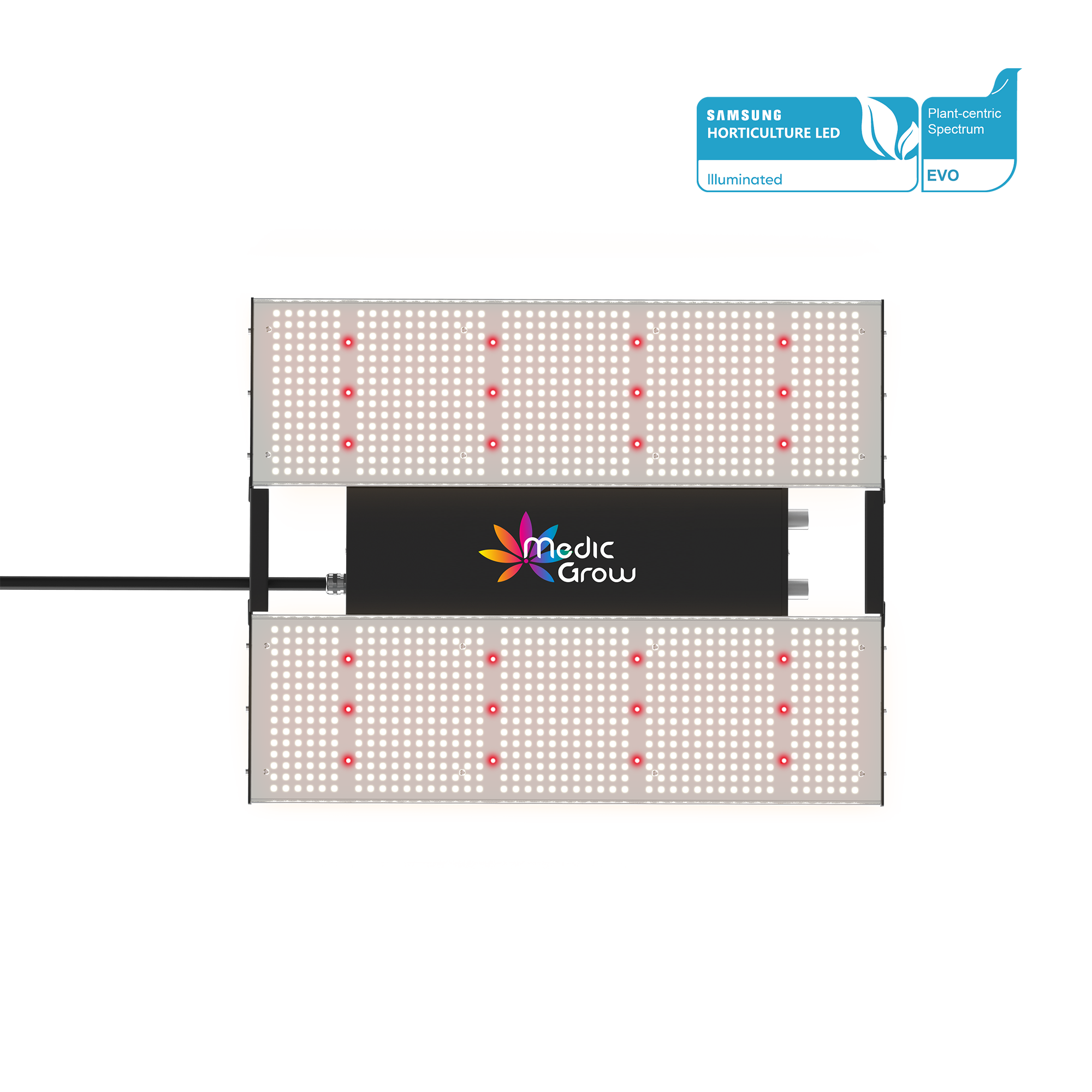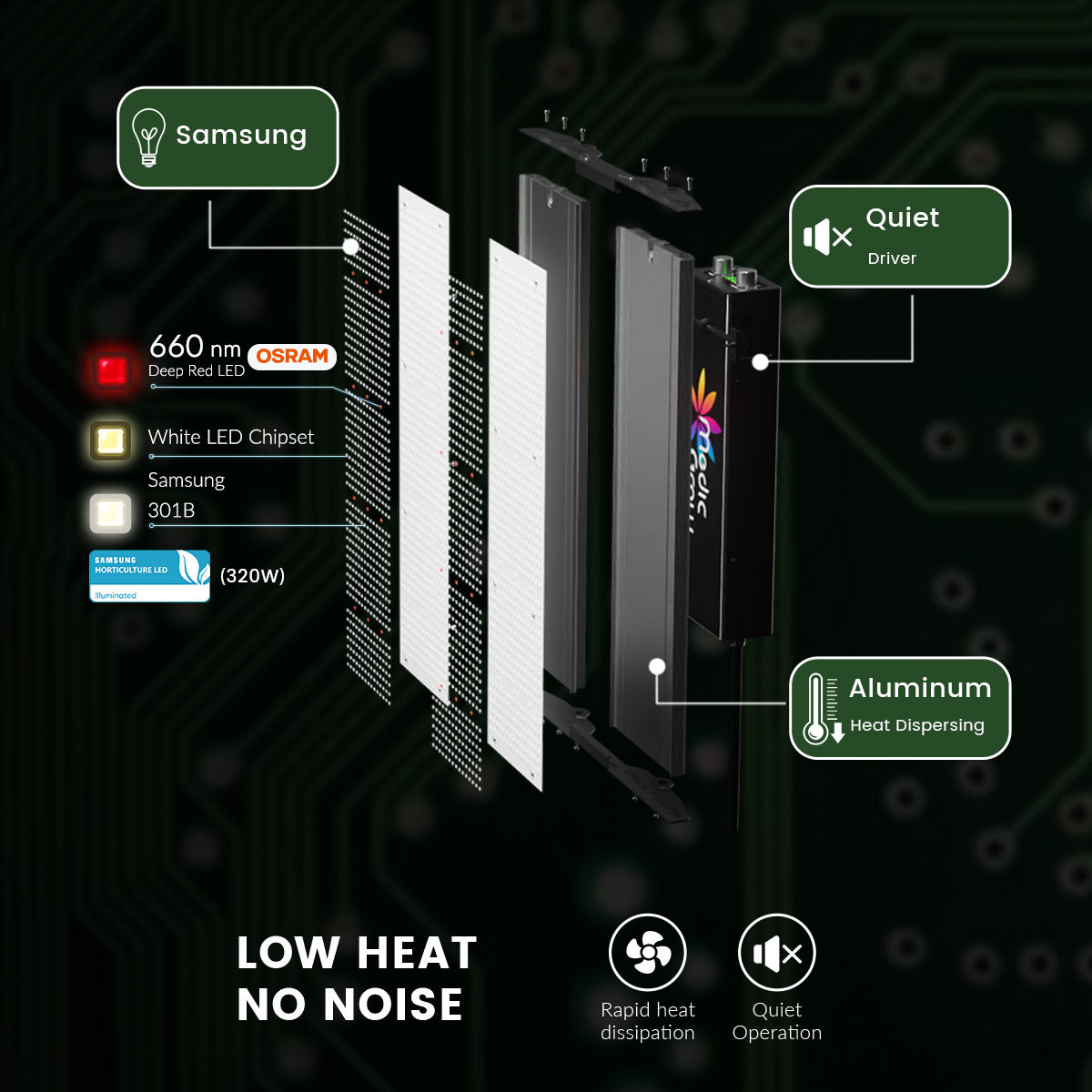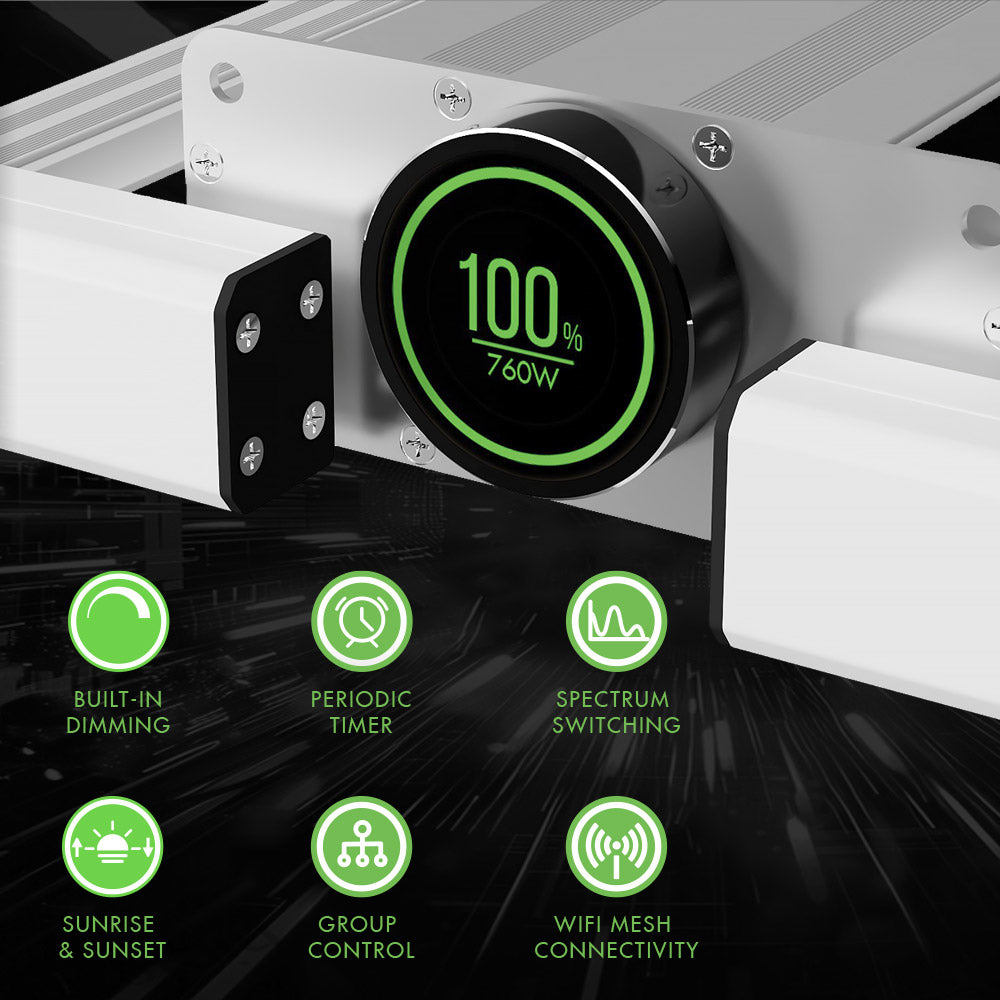
Are LED Grow Lights Harmful to Humans? (2024 Update)
Modern technology has made plantation and farming quite easy. After the introduction of LED grow lights, we can easily mimic the sunlight and provide a fruitful spectrum that can help in the growth of plants.
These grow lights have taken indoor farming to the next level. Undoubtedly, LED grow lights have numerous benefits, but many people are confused about their safe use, are grow lights harmful to humans?
If you are concerned about are grow lights safe for humans, you are not alone; it’s frequently asked. In this article, we will answer some common questions related to the safe use of LED grow lights and clear all your doubts.
Main Content:
- 1. Are Grow Lights Harmful to Humans?
- 2. What Types of Light Can Be Dangerous?
- 3. Are Grow Lights Bad for Your Eyes?
- 4. Do LED Grow Lights Emit UV?
- 5. Are Grow Lights Safe for Humans?
- 6. Preventive Measures
- 7. Conclusion
- 8. FAQ about Are Grow Lights Bad for Humans
Are Grow Lights Harmful to Humans?
Grow lights, especially full spectrum LED grow lights are generally safe for humans when used properly, and considering some precautions would be better. Some grow lights emit ultraviolet (UV) light, which can be harmful to the skin and eyes with prolonged exposure.
It's important to minimize direct exposure and wear protective gear if you need to be near the lights for extended periods. Additionally, high-intensity lights like HPS and MH can produce significant heat, posing a burn risk and potentially overheating the surrounding area.
What Types of Light Can Be Dangerous?
Overexposure to any light can be dangerous, even if it is natural sunlight. This is why people use protective sunblock when they are overexposed to the sun for a long time.
Based on wavelength and frequency, electromagnetic radiations are classified and named. Understanding the type of electromagnetic radiation that could be dangerous for humans can protect your safety.
Look at the table below to observe the classification of electromagnetic radiation.

White light is composed of various electromagnetic radiations, but principally it is composed of UV, Visible, and IR radiations. These three radiations combined represent white light, whether it be artificial or natural sunlight.
The above classification clearly shows that only one band of light is visible to us, and most of the portion of white light, IR and UV, is invisible to humans. Although the portion is invisible, it could be dangerous to eyesight.
The wavelengths that are below the wavelength of the visible spectrum are dangerous. It means UV rays and other radiations having lesser wavelengths are quite harmful. The intensity of harming humans increases as the wavelength decreases. On the other hand, the visible portion and radiations having more wavelength do not harm humans.
UV rays can be further classified into three types UVA, UVB, and UVC. UVC has the shortest wavelength among all; therefore, it is the most dangerous one. Luckily, the atmospheric layers of Earth do not allow UVC radiations to pass, so the sunlight that we receive does not have UVC radiations.
Similarly, LED grow light bulbs like Medicgrow 150-watt grow light for house plants and other types of LED grow lights do not emit UVC radiation as they are not designed to do so. Additionally, if you're still concerned about UV plant light, you can protect yourself by using a grow tent to block out the light.

Image Source: https://www.darkniteglow.com/
Are Grow Lights Bad for Your Eyes?
UVA and UVB radiations are present in the sunlight and the light produced by LED grow fixtures. These two types of radiation are dangerous to humans. Moreover, our cornea cannot filter UVA rays, so it is also harmful to our eyes. UV rays are harmful, however, these are only dangerous if our eyes are overexposed to light for a very long time and at a very high intensity.
There is no need to worry about these radiations as protective measures can be taken. For indoor growing, wear goggles to protect your eyes or use a high-quality indoor grow tent kit to block out light. With the correct safety measures, these radiations do not harm the skin.
Sunlight also gives off these radiations, but with the correct precautions, the hazards can be prevented. We already know the effects of UV plant light, and now, let’s see whether the LED grow lights emit UV rays or not.
Do LED Grow Lights Emit UV?
When it comes to indoor farming, it is essential to provide the required spectrum to the plants. Otherwise, the photosynthesis, growth, and level of nutrients can be affected. Plants need various radiations to continue the processes, which is why LED grow light strips and lamps emit various radiations.
Plants do not require UV rays for photosynthesis; however, the presence of UV plant light offers some advantages. Some of the benefits of UVA and UVB lights include quicker photosynthesis, protection from pests, more nutrients, and better yield. Thus, UV light for plants like Medicgrow Spectrum-Y is excellent for indoor growers.

Image Source: Wikipedia
Now, we understand that UV rays are good for plants, so the answer to the question would be quite clear. LED grow lights like Medicgrow 1000W LED grow light also emits a high value of PPFD to provide more benefits to the indoor farmer, which is another key factor for plant growth.
There are different types of LED grow lights available, and they produce different types of spectrum. Indoor farmers need to select the right LED grow lights for their crops that are safe for humans.
Are Grow Lights Safe for Humans?
Grow lights are generally safe for humans when used correctly, as long as certain precautions are taken. Avoid direct exposure and wear protective gear if you will be near the lights for extended periods. Besides, choosing efficient LEDs such as the Medicgrow 800w LED grow light can greatly reduce the heat, ensuring the safety of both your plants and humans.
For a better understanding of this question, we would like to ask another question. Do you think mobile screens are dangerous to humans? Your answer would probably be YES if you know mobile phones emit blue radiations that are harmful to eyesight. But does it mean we should stop using mobile phones? Absolutely not!
Everyone would prefer to use mobile phones with some preventive measures. The screen time must be controlled, and radiation should be as low as possible. You can also use UV and blue light protective lenses to protect your eyesight.

There is no doubt that mobile screens can also cause various issues; therefore, we need to take suitable steps to protect our eyes. So let's see what precautions can be employed against UV plant light.
Preventive Measures
The workers working in the environment with LED grow lights should wear protective dresses. They also need to control the time they spend under the LED grow lamp or any other fixture. Moreover, the workers should wear fully covered clothes, such as a full-sleeve shirt or any other protective dress, to protect their skin.
The radiations from LED UV plant light are also harmful to the eyes as they contain UV rays. However, you can easily find suitable glasses for LED grow lights. These glasses provide the ultimate protection from UV rays, so there won’t be any harm to the wearer.
Another important safety measure is the distance of the LED grow fixture from the worker. You cannot place these light fixtures too far as they won’t provide the required radiation to the plants. However, there should be a minimum clearance of 3 feet between the fixture and the worker to protect them from UV plant light.
By taking the above steps, you can be completely comfortable using LED plant grow lights for indoor growing as they are not harmful to you.
Conclusion
In summary, grow lights do not pose a hazard to people, especially when proper protection such as goggles is used and a safe distance is maintained. Furthermore, advancements in LED UV plant light technology not only benefit plants but also make them safer for humans. So, why not try out a new way of indoor growing?
Related Posts:
Do Grow Lights Actually Help Plants?
What Type of Light Is Best for Growing Plants Indoors?
Do Indoor Plants Need UV Light?
FAQ about Are Grow Lights Bad for Humans
1. Is UV Light for Plants Safe for Humans?
UV light for plants can be safe for humans when proper precautions are taken. UV light, particularly UV-B and UV-C, can be harmful to the skin and eyes with prolonged exposure. To ensure safety when using UV light for plants:
- Lowest Exposure: Avoid direct exposure to UV plant light and lowest the time spent in areas where UV lights for plants are in use.
- Protective Gear: Wear protective clothing, such as long sleeves and gloves, and use UV-blocking eyewear to protect your eyes.
- Safety Measures: Implement safety measures such as timers to control when the UV plant lights are on, and use barriers or enclosures to prevent accidental exposure.
By following these precautions, the risks associated with UV light for plants can be minimized, ensuring a safe environment for humans.
2. Is Plant UV Light Bad for Your Eyes?
Yes, plant UV light can be harmful to your eyes. Exposure to UV light, particularly UV-B and UV-C, can cause several eye problems, including photokeratitis and conjunctivitis. To protect your eyes from the harmful effects of plant UV lights:
- Wear Protective Eyewear: Use glasses or goggles that block UV light when working near these lights.
- Limit Exposure: Minimize the amount of time spent directly under UV light for plants.
- Use Grow Tents and Barriers: Install grow tents or barriers to block or reduce UV exposure in areas where the UV plant lights are used.
By taking these precautions, you can significantly reduce the risk of eye damage from UV lights for plants.
3. Can Grow Lights Cause Cancer?
Grow lights can pose a cancer risk due to their emission of ultraviolet (UV) light. Regular and unprotected exposure to UV light can cause skin damage, increasing the risk of cancer. Just like protecting ourselves from direct sunlight, precautions should be taken to prevent UV light.
To minimize these risks, wear long-sleeved clothes and UV-blocking sunscreen when working near UV-emitting grow lights, and use UV-protective goggles or glasses to safeguard your eyes. It's also a good idea to consider using grow tents to block UV light.
Featured Products
Blog Posts
Contact Us with Any Idea!
- Choosing a selection results in a full page refresh.
!
































